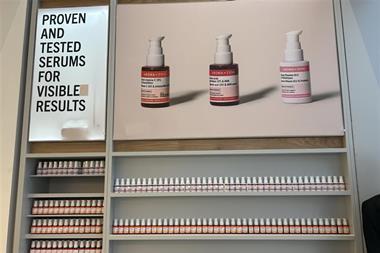Leading UK senior executives reveal their expectations for the next 12 months in our Retail 2013 report in association with Kurt Salmon.

Subscriber exclusive: Download your free report
Retail 2013 is the new, definitive report on the state of UK retail – produced by Retail Week, inassociation with Kurt Salmon.
The failure of Blockbuster, HMV and Jessops so early in 2013 only serves to confirm the prevailing opinion among senior retail leaders that the coming year will be every bit as tough as the last few.
The abiding view of the 28 senior executives interviewed for the forthcoming Retail 2013 report, produced by Retail Week in association with Kurt Salmon, is that the UK retail sector can expect “more of the same” this year with a limited economic recovery that will offer little help to a becalmed market.
In contrast to the pronounced bounce observed after other recessions, 2013 will not bring a period of relatively strong economic growth, no following wind offering retailers the chance to recover ground quickly.

Instead, they are having to cope with a ‘new normal’ of no or low growth, where any progress will be hard won. Moreover, these conditions are expected to prevail for a period of at least several years.
“The only growth we will be seeing this year is inflationary growth,” says the chief executive of a supermarket chain. “I can’t see there being any significant change in the core trading conditions in the next two to three years.” A flat line, says another senior executive, would be “a good result”.
The retail economy could be said to have stalled. Consumers remain reluctant to begin spending again on the back of a faltering recovery, but the depressed consumer mood and weak spending are among the chief reasons why the recovery is so slow.
Resigned consumer mood
When asked to rank factors that will most influence consumer behaviour in 2013, the chief executives focus on those related directly to confidence, such as unemployment or fear of it, debt, inflation and cost of living - broadly speaking the same factors that were weighing on consumers’ minds last year. So it could be said that even though there are signs of economic recovery, consumer confidence is proving harder to move forward. The chief executive of a high street retailer adds: “Nothing changed much last year and I can’t see any reason at the moment for their mood to change this year. They are not optimistic.”
That said, there are signs retailers are seeing a subtle but important shift in consumer attitudes to the tough
conditions.
“Customers are less frightened and more resigned, but they are also risk-averse,” says a grocery retailer. “Our customers are extremely cautious.”
Retail leaders say they have observed some uplift in consumer confidence, with 46% believing the consumer mood is “a little better” and 7% that it is “much better” than a year ago. From the interviews conducted, there is a widespread feeling that this stems from an acceptance of the status quo, rather than optimism conditions will improve this year.
“It is a little better because they understand what the ‘new normal’ means,” a department store chief executive says. “The apprehension has gone and it has been replaced by resignation. They are just getting on with what is a bad situation.”
While a reduction in fear is unlikely to drive strong retail growth, this does suggest consumers at least feel the environment has stabilised.
The chief executive of a high street retailer said: “The main factor is that consumers are less fearful. There were periods in the past few years and especially during last year when people were genuinely scared about what was going on. The ground was moving.
Everything was so unpredictable. So I don’t think the situation is any better in reality, it’s just that consumers have adapted to the uncertainty.”
Low investment

Continued consumer caution is also reflected in retail investment. While the report points to a marginally positive shift in the balance retailers are seeking between cost reduction and driving growth, the overall view on investment remains cautious, and many retailers say it must go hand-in-hand with cutting costs.
For example, one chief executive suggests in a low-growth economy “you have to cut to re-invest”, a view echoed by another, who states: “We are just trying to use cost savings to generate investment in growth.” Such a ‘safety first’ outlook suggests the continuation of low investment levels that have already delayed recovery.
The situation is exacerbated by the attitude of the banks towards retail investment, some senior executives suggest. Some call for Government action to increase bank lending in order to boost investment, and the need to support small businesses is a particular concern. “I think they could be much more proactive in terms of persuading banks to give business support,” says the chief executive of a specialist retail chain. “Banks are risk-averse, especially towards retailers.”
Online and multichannel
However, one area where there has been and will continue to be investment is in the online and mobile sectors and in multichannel integration, the report makes clear.
Multichannel development was identified as a key business priority for 2013 by a large majority of the retail leaders. About 80% of the sample identified multichannel as a major priority, and 60% make it the top priority, markedly higher than last year.
In contrast to the views of retail chiefs towards economic recovery in 2013, they are positively effusive when attention is turned to online retailing and multichannel integration.
“We have only been in multichannel four years but it is by far the fastest growing element of the business,” says a department store chain executive director. “I have to say the growth in four years has been phenomenal. A good online offer will be a great advantage to a retailer this year. We will continue to develop multichannel and, of course, mobile, which is our single biggest growth area.”
The chief executive of another large retail group says: “All forms of internet and multichannel retail will have
basic growth so, in systemic terms, should offer the best growth prospects this year.”
Ironically, the area of the market agreed by all to offer the best growth potential in 2013 is probably the one that has derived the least benefit from the online revolution, namely the value sector.
There was universal agreement among the retail leaders that the strong progress seen in the value and discount sector over the past few years will continue in 2013, as consumers retain frugal buying habits acquired during the recession. With the luxury end generally far less affected by the economic conditions, it is the middle market that will be squeezed.
The pattern of store closures and business failures is also expected to continue in 2013. “The insolvency rate within retail in general is continuing to be at an all-time high and I think that trend will continue through 2013,” says the chief executive of a fashion chain.

It could be said that the early retail failures in 2013, particularly HMV and Blockbuster, have been casualties of the online retailing revolution and underline the perils of failing to adapt to the growth of online.
This would appear to confirm that online investment and multichannel integration are far more than business development opportunities, they are prerequisites for survival.
Subscriber exclusive: Download your free report
Retail 2013 is the new, definitive report on the state of UK retail – produced by Retail Week, in association with Kurt Salmon.


























No comments yet